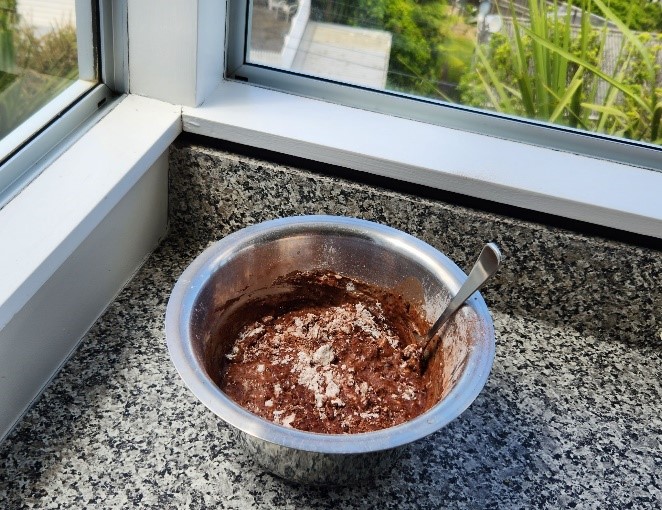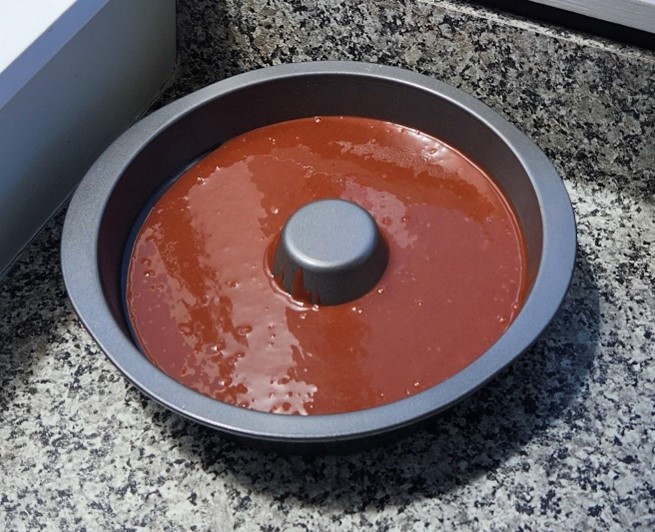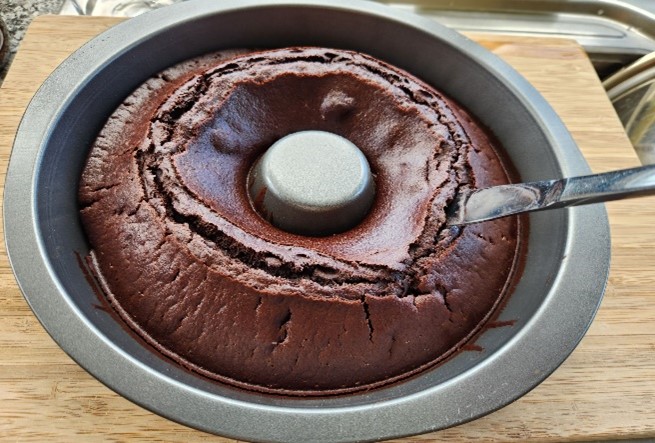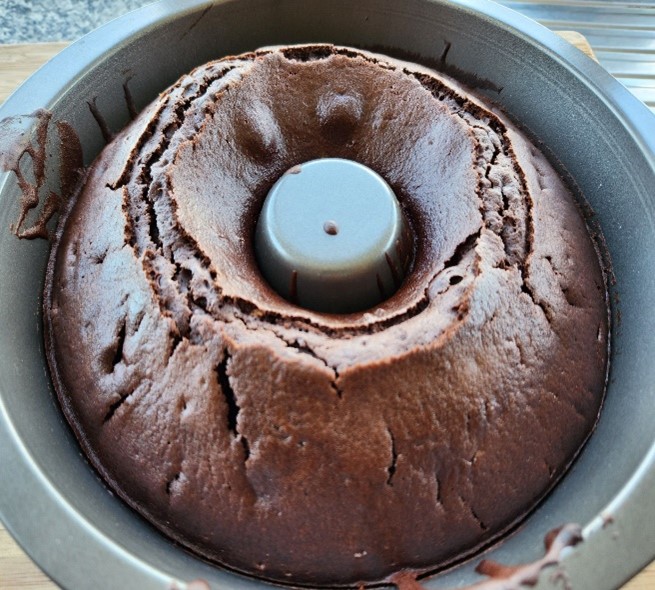The Choco Carbon Bomb Cake
By Julian Warmington
This is the first in a series of delectable vegan recipes for all to enjoy while, at the same time, contributing to one’s own health and also to the healing of our environment. — Ed.
Ingredients
- 1½ cups of sifted all-purpose flour
- 3 tablespoons of cocoa powder
- 1 teaspoon of baking soda
- 2/3 cup of granulated sugar
- 5 tablespoons of oil
- 1 tablespoon of vinegar
- 1 teaspoon of vanilla extract
- 1 cup of cold water
Directions
- Turn on your oven to heat it up in preparation for baking your cake, which will be ready in only five minutes (once you find your vinegar)!
- Sift all dry ingredients together into a mixing bowl: flour, cocoa powder, baking soda, salt, and sugar.
- Use a spoon or other implement to create three grooves or holes in the dry ingredients.
- Measure and pour in the wet ingredients: oil into one groove, vinegar into a separate hole, and vanilla into the final indent.
- Pour the water into the mixing bowl so that it covers all the ingredients and mix until fully blended. Then pour the ingredients into your baking tin.
- Bake at 175° for 30–35 minutes or until a knife or toothpick inserted into the center comes out clean.
- Cool slightly before serving. Consider adding icing on top, or for the best dessert, eat with fresh fruit and Natuur cashew and vanilla ice cream.





Notes
- The light, airy texture of the cake is created by the mixing of vinegar and baking soda – an acid with a base (or highly alkaline substance) – which produces carbon dioxide. This is the same process that brought us the famous YouTube cola & Mentos reaction. This recipe needs no milk, butter, nor even eggs. This is a huge bonus in terms of having no cholesterol and much reduced saturated fat, but most of all, even despite directly producing carbon dioxide in the baking, because of your not using milk and butter, the total greenhouse gas footprint (and also water pollution impact) of this single cake is much smaller than the pollution created by a cake the same size using butter, milk, and eggs.
- The original recipe suggests you mix the ingredients within the very cake tin in which you will bake your cake. This shows just how easy it is to prepare this simple, reliable recipe. Mixing within the baking tin appeals to my sense of laziness, but most modern baking tins have non-stick surfaces, so if you use a fork to mix your ingredients, use a mixing bowl made of stainless steel, glass, or porcelain to avoid scratching the baking tin.
- The earliest written version of a similar recipe was in 1960, within The I Hate to Cook Book by Peg Bracken. Bracken was an advertising copywriter who worked with Homer Groening, Matt Groening’s father. Matt created the TV show The Simpsons, featuring a father named Homer. Bracken said her book developed from talking with other professional women who “pooled their ignorance” in sharing easy-to-cook recipes and techniques. In her introduction to this chocolate cake, she wrote:
This is a famous recipe, I believe, but I haven’t the faintest idea who invented it. I saw it in a newspaper years ago, meant to clip it, didn’t, and finally bumped into the cake itself in the apartment of a friend of mine.
It was dark, rich, moist, and chocolatey, and she said it took no more than five minutes to mix it up. So, I tried it, and oddly enough, mine, too, was dark, rich, moist, and chocolatey. My own timing was five and a half minutes, but that includes hunting for the vinegar.
- The name for that similar cake recipe is outdated. Pam Bracken uses the name “Cockeyed Chocolate Cake.” Regardless of who actually chose the name, the word cockeyed means “something that seems irregular or unusual but is actually quite natural,” just like a rooster that has eyes on both sides of its head, like most birds, fish, and mammals. The recipe is similarly unusual in that it is so simple yet delicious that it immediately proves eggs and dairy entirely unnecessary, and it achieves this by using a natural process to make the cake rise.
Photographs courtesy of Julian Warmington.
The Author
Julian Warmington taught for twenty years at the university level in South Korea, half of which he spent in Gwangju. He was the editor-in-chief of the Gwangju News twice, oversaw its development from a single-page leaflet newsletter to a full color magazine, and established Gwangju News Online.




